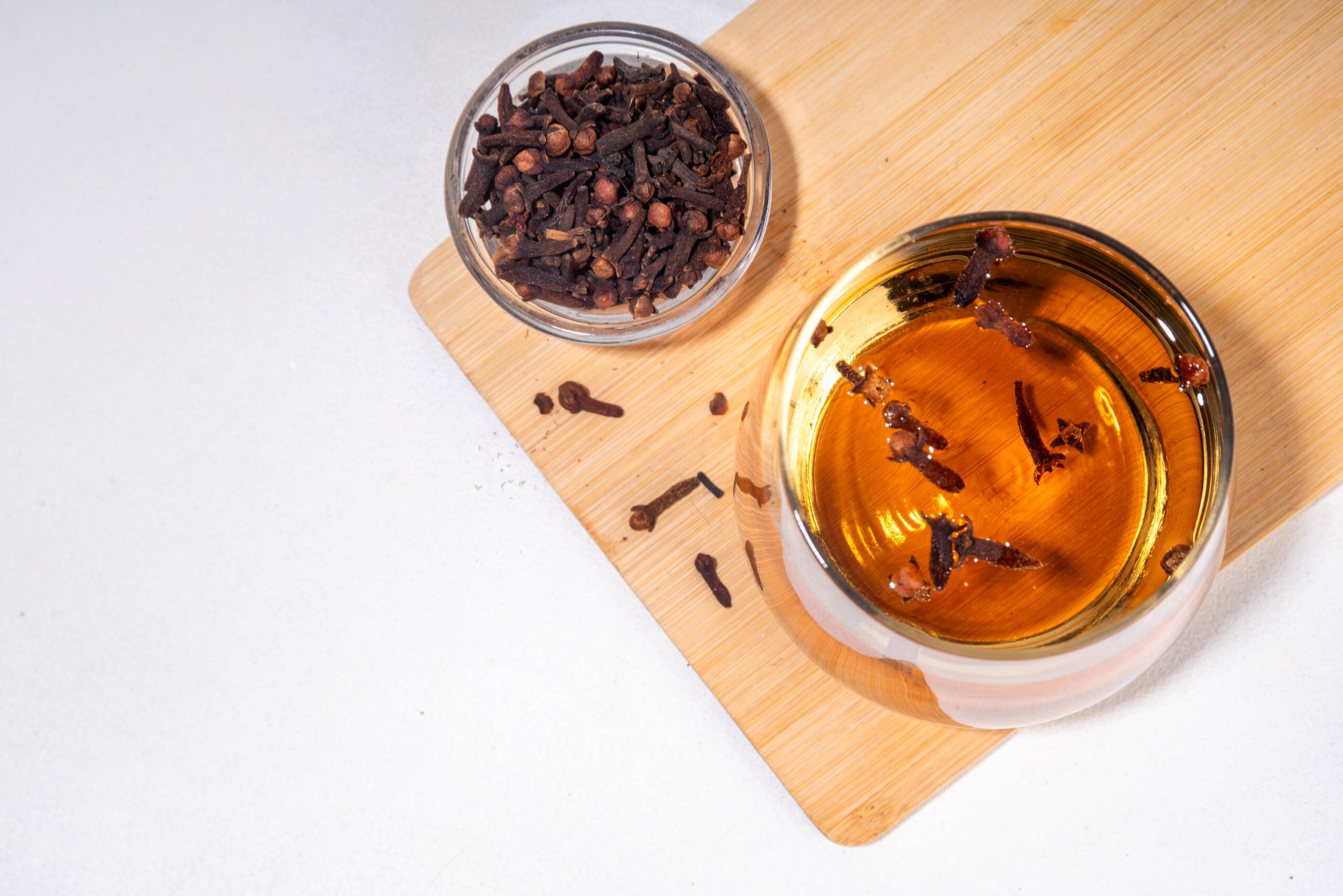What you’ll learn:
- Mounjaro® and Trulicity® are GLP-1 medications that are approved to treat type 2 diabetes and can be prescribed off-label for weight loss.
- While they share similar costs and dosing schedules, Mounjaro® tends to deliver more significant weight loss results than Trulicity®.
- Choosing between them comes down to individual goals, side effect tolerance, and insurance coverage.
Losing weight isn’t easy—even when you’re eating better and moving more. Things like hormones, genetics, and even certain health conditions can have a big impact, and they’re not always within your control. That’s why some people turn to GLP-1 receptor agonists, a type of medication that mimics hormones to help regulate appetite and support weight loss. You’ve probably heard of Ozempic®. It’s one of the more well-known options in this category and is frequently prescribed for off-label weight loss, though it’s FDA-approved to treat diabetes.
Ozempic® isn’t the only medication that can help people lose weight and manage diabetes. Mounjaro® and Trulicity® are two other options that can help reduce appetite, slow digestion, and help the body regulate blood sugar more efficiently.
Which of these will help you lose more weight? Mounjaro® is a newer GLP-1 medication, and it’s likely to help you lose more weight than Trulicity® in terms of pounds lost. But effectiveness isn’t the only factor when it comes to choosing a weight loss medication. Both medications come with different costs and features that may make one better for you than the other.
If you’re considering Mounjaro® or Trulicity® to help with weight loss in 2025, understanding the key differences in effectiveness, cost, side effects, and accessibility can help you make the best choice for your health goals.
Trulicity® vs. Mounjaro®: How do they work?
Mounjaro® and Trulicity® are in the same family of medications, but they work in different ways because they contain different active ingredients. Mounjaro® is made from tirzepatide, while Trulicity® is made from dulaglutide. Let’s take a closer look at how they work:
- Trulicity® (dulaglutide) is the older of the two. It was approved by the FDA in 2014 to treat type 2 diabetes. As a GLP-1 receptor agonist, it mimics GLP-1, which your body releases after eating. By binding to receptors that react to GLP-1, it lowers appetite, slows stomach emptying, and regulates blood sugar. It’s taken as a once-weekly injection. People tend to experience modest weight loss with Trulicity®.
- Mounjaro® (tirzepatide) came along more recently. It was approved by the FDA in 2022 for type 2 diabetes. In 2023, tirzepatide was approved under the name Zepbound® for weight management. What makes tirzepatide different? It’s a dual agonist, meaning it mimics two hormones, GLP-1 (just like Trulicity®) and GIP (glucose-dependent insulinotropic polypeptide). GIP is a hormone involved in blood sugar control and metabolism. When combined with GLP-1 action, it seems to have a synergistic effect, leading to greater blood sugar control and more significant weight loss than GLP-1 medications alone.
Trulicity® vs. Mounjaro®: What are the similarities?
While Mounjaro® (tirzepatide) and Trulicity® (dulaglutide) are made from two different ingredients, they are very similar in approved uses, how they are taken, side effects you can expect, costs, and more. Let’s go through the key similarities:
Both are FDA-approved for type 2 diabetes
Mounjaro® and Trulicity® are approved to help people with type 2 diabetes manage blood sugar levels. They can also be prescribed off-label for weight loss. Trulicity® can also be prescribed to prevent heart disease.
They are made by the same manufacturer
Both medications are developed by Eli Lilly, a pharmaceutical company specializing in diabetes and metabolic treatments. Mounjaro® was the first FDA-approved dual GLP-1 and GIP agonist.
You take them the same way
Mounjaro® and Trulicity® are both taken once a week as an injection that you give yourself with a prefilled injection pen.
Their costs are similar
The price of these two medications is similar. For both, what you pay out of pocket will depend on insurance coverage and available savings programs. Both might be covered for diabetes use, but rarely for weight loss purposes.
Trulicity® vs. Mounjaro®: What are the differences?
Mounjaro® and Trulicity® have a lot in common, from how they’re taken to what they might cost and potential insurance coverage. If you’re looking to manage type 2 diabetes, they can both be very effective. The biggest difference is that the tirzepatide in Mounjaro® is likely going to be more effective for weight loss than the dulaglutide in Trulicity®. Here’s a look:
- Trulicity® can lead to a reduced appetite and modest weight loss in some people, but weight loss isn’t its primary purpose. It was developed to manage type 2 diabetes, and any weight changes are more of a helpful side effect than a driving feature.
- Mounjaro®’s dual action does more than just help regulate blood sugar. It works on multiple pathways that affect appetite, satiety, insulin sensitivity, and fat metabolism. Because of this dual action, Mounjaro® tends to be much more effective for weight loss than Trulicity®. Tirzepatide has been studied and approved for that purpose under the name Zepbound®.
Trulicity® vs. Mounjaro®: Which is better for weight loss?
While both medications can help you lose weight, Mounjaro® has shown greater weight loss results in clinical trials. The right choice depends on individual health needs, prescription eligibility, and insurance coverage. Let’s go through all the details.
How much weight can you lose on Trulicity® and Mounjaro®?
Here’s where the differences really stand out. While both medications can lead to weight loss, Mounjaro’s results are in a completely different league.
- Trulicity®: After about a year of treatment, people see a weight reduction of about 3 to 5% of their body weight. That’s a meaningful change, especially when paired with improved blood sugar control.
- Mounjaro®: The numbers here are much more dramatic. In clinical studies, people taking tirzepatide lost an average of 21% of their body weight after about 72 weeks of treatment. That’s the kind of weight loss that starts to approach the results seen with bariatric surgery, and it’s one of the reasons tirzepatide has been approved for weight management.
If weight loss is a key part of your treatment goals, Mounjaro® offers a significantly greater potential for change than Trulicity®.
How long does it take to see results?
Starting a weight loss journey with medications like Mounjaro® and Trulicity® takes time, but you should see some changes in your appetite in the first few weeks. For most people, the first signs are noticeable between one and three months.
Here’s a general timeline of what you might expect in terms of the average percentage of body weight lost:
Trulicity® (dulaglutide)
3 months: 4%
1 year:
- 1.5 mg: 4%
- 4.5 mg: 5%
- Overall weight loss: 3 to 5%
Mounjaro® (tirzepatide)
3 months: 8%
1 year and beyond:
- 5 mg: 15%
- 10 mg and 15 mg: 21%
- Overall weight loss: 15–23%
Of course, individual results will vary depending on your eating and exercise habits.
Rx weight loss, the right way, with Noom
Get access to prescription weight loss medication with Noom.Can you switch between Trulicity® and Mounjaro®?
Switching between Mounjaro® and Trulicity® is possible, but it’s important to do so under the guidance of your healthcare provider. They can advise you on the appropriate timing, dosage adjustments, and any potential considerations based on your individual health needs.
When switching from Trulicity® to Mounjaro®, here’s what might happen:
- Increased effectiveness: Since Mounjaro® activates both GLP-1 and GIP receptors, you might experience greater improvements in blood sugar control and potentially more weight loss compared to Trulicity®.
- Dosage adjustments: Your doctor will likely start you on a low dose of Mounjaro® and gradually increase it as needed. The starting dose may depend on your previous Trulicity® dose and how well you tolerated it.
- Side effects: You might experience similar side effects with Mounjaro® as you did with Trulicity®, such as nausea, vomiting, and diarrhea. The intensity and frequency of these side effects could vary.
- Cost and insurance: The cost and insurance coverage for Mounjaro® may differ from Trulicity®. Be sure to check with your insurance provider to understand your coverage and any potential out-of-pocket costs.
Mounjaro® and Trulicity®: Who are they approved for?
Mounjaro® and Trulicity® are both FDA-approved for type 2 diabetes, but they can be prescribed off-label for weight loss.
Doctors may consider prescribing them for weight management if you have:
- A BMI of 30 or higher
or
- A BMI of 27 or higher with a weight-related condition like high blood pressure or high blood pressure.
Who shouldn’t take Mounjaro® or Trulicity®?
While considered safe, these medications aren’t right for everyone. You should avoid Mounjaro® or Trulicity® if you:
- Have a personal or family history of medullary thyroid carcinoma (MTC) or multiple endocrine neoplasia syndrome type 2 (MEN 2).
- Are allergic to tirzepatide, dulaglutide, or any of their ingredients.
- Are pregnant, planning to become pregnant, or breastfeeding.
You should talk to your doctor about whether one of these medications is right for you if you have:
- A history of pancreatitis.
- Severe gastrointestinal issues, such as gastroparesis (delayed stomach emptying).
For full safety details, visit our pages for Mounjaro® and Trulicity®.
If you take Mounjaro® or Trulicity® for weight loss, will you need to stay on them forever?
How long you stay on Mounjaro® or Trulicity® depends on your weight loss goals, health needs, and how your body responds over time. People typically stay on GLP-1 medications for six months or longer if they continue to be effective. Some may transition off for several reasons, including reaching their goal weight, because of side effects, or because of the cost. What happens when you stop taking them?
- Stopping the medication suddenly can lead to weight regain, as the body’s natural hunger signals return. Research suggests that some people regain lost weight after discontinuing GLP-1 medications, especially without ongoing lifestyle changes. One study showed that 18% of people gained 100% or more of their weight back after 12 months. Here’s what could happen when you stop taking a GLP-1, including potential weight fluctuations and increased appetite.
- Tapering off the medication is recommended to help the body adjust gradually. In one study, people maintained a stable weight for the first 26 weeks after stopping semaglutide (Ozempic®/Wegov®y) using the taper method. Your doctor can help create a tapering plan that works for you. Learn more about safely stopping and restarting GLP-1 medications to avoid drastic weight regain or metabolic shifts.
- Lifestyle habits play a major role in maintaining weight loss. Medications can help, but keeping weight off long-term will depend on balanced eating, exercise, and mindful habits. Without these, weight regain is more likely after discontinuing treatment.
If you’re considering coming off Mounjaro® or Trulicity®, talk to your doctor about tapering strategies and ways to maintain progress without medication.
Trulicity® vs. Mounjaro®: Costs
If you’re looking at Mounjaro® and Trulicity®, the price will likely be an important factor. Neither medication is likely to be covered by insurance if prescribed for weight loss. The exact price you’ll pay for each medication depends on your coverage, pharmacy choice, and eligibility for any manufacturer discounts or savings programs.
- Mounjaro® has a list price of $1,080 per month without insurance.
- For those with commercial insurance, Mounjaro®‘s savings card applies to a 1 to 3 months’ supply (4-12 pens) and can reduce the price to as little as $25. Read more about the costs associated with Mounjaro®.
- Zepbound®, Mounjaro’s weight-loss counterpart, comes with a slightly different pricing structure than Mounjaro® because it is available in two forms: a pre-loaded injection pen and vial and syringe. The injector pen will cost nearly as much as Mounjaro: $1,086 per month. The vials and syringes, available through the manufacturer’s Lilly Direct program, will cost $349 for 2.5 mg and $499 for 5 mg, 7.5 mg, and 10 mg.
- Trulicity® has a list price of $987 per month without insurance.
- Trulicity®‘s savings program covers up to 12 pens over 3 months and can also lower the price to $25 for those with commercial insurance coverage. Read more about the costs associated with Trulicity®.
If cost is the biggest factor in deciding between tirzepatide and dulaglutide, Zepbound® could be the most cost-effective for weight loss at the lower doses.
Always discuss your options with your doctor to find the best solution that fits your unique needs and goals. You can also see if you qualify for Noom Med. If so, you’ll be connected with a clinician who can assess your health goals and prescribe the right medication for you if needed.
Does insurance cover Mounjaro® or Trulicity® for weight loss?
As we’ve said, coverage is rare when prescribed for weight loss. While private plans might cover Trulicity® and Mounjaro® for type 2 diabetes, weight loss coverage depends on the insurer and specific policy. It’s worth checking with HR or your benefits team to find out if your plan covers them. Looking for more in-depth info? Check out our full pricing guide on Mounjaro® and Tulicity.
Does Medicare cover Mounjaro® or Trulicity®?
If you’re on Medicare and considering Mounjaro® or Trulicity®, coverage depends on your plan and how the medication is prescribed. Right now, Medicare excludes weight loss medications from coverage.
Trulicity® is covered under Medicare Part D for type 2 diabetes. Most Medicare drug plans include it on their approved list, but your out-of-pocket cost will depend on your plan, deductibles, and copays. Mounjaro® coverage is less consistent. Some Medicare Part D plans may cover it for diabetes, but you might need prior authorization or proof that other diabetes treatments didn’t work first.
Since every Medicare Part D plan is different, the best way to find out if Mounjaro® or Trulicity® is covered for you is to:
- Log in to your Medicare plan’s website and check the formulary.
- Call your insurance provider and ask if these medications are covered under your specific plan.
- Talk to your doctor about alternatives or savings programs if Medicare doesn’t cover the cost.
Trulicity® vs. Mounjaro®: Side effects
Trulicity® and Mounjaro®, while effective for many, may cause some side effects. While these tend to be mild and manageable, it’s important to be aware of some of the rarer and more serious side effects that may occur and require medical attention.
Here’s what you might experience and how to handle it:
Common side effects
The most common side effects are typically mild to moderate and often resolve as your body adjusts to the medication. They can also crop up again when your dose increases. These include:
- Nausea
- Vomiting
- Diarrhea or constipation
- Stomach pain or discomfort
- Fatigue
Serious side effects and warnings
Both Trulicity® and Mounjaro® have a boxed warning about a possible risk of thyroid tumors, including a type of thyroid cancer called medullary thyroid carcinoma (MTC). This has been observed in animal studies, and it’s not yet clear if this risk applies to humans.
Here are some other serious (though rare) side effects to watch out for. You should get immediate medical attention if you suspect them.
- Pancreatitis: Symptoms include severe abdominal pain that radiates to your back, with or without vomiting.
- Gallbladder problems: Symptoms include upper abdominal pain, fever, jaundice, or clay-colored stools.
- Kidney problems: Dehydration from vomiting or diarrhea can sometimes strain your kidneys. Seek immediate medical attention if you experience decreased urination, swelling in the ankles or legs, fatigue, or shortness of breath.
- Low blood sugar (hypoglycemia): This is more common if you’re also taking other medications for diabetes. Symptoms include dizziness, shakiness, blurred vision, and a fast heartbeat.
- Vision changes: Report any sudden changes in your vision to your doctor. These could include blurred vision, eye pain, sensitivity to light, double vision, or dry eyes.
- Allergic reactions: Symptoms include swelling of the face, lips, tongue, or throat, difficulty breathing or swallowing, or a rapid heartbeat. Get immediate medical attention if you think you’re having an allergic reaction.
If you have concerns about any side effects or your overall health while taking these medications, consult your doctor. For more detailed safety information, visit the Mounjaro® safety page or the Trulicity® side effects page.
Mounjaro® vs. Trulicity®: Dosage and administration
Both Mounjaro® and Trulicity® are injected once a week, on the same day each week, in the abdomen, thigh, or upper arm, and can be taken with or without food. They both follow a step-up dosing schedule, which means you will start on the lowest dose, and it will be increased as tolerated. Here’s what the dosing schedule looks like:
- Mounjaro® comes in six doses: 2.5 mg, 5 mg, 7.5 mg, 10 mg, 12.5 mg, and 15 mg. Everyone starts at 2.5 mg and moves up in doses as needed to continue steady weight loss and as tolerated. If you miss a dose, you have up to four days (96 hours) to take it; otherwise, just wait for your next scheduled dose.
- Trulicity® has four dose options: 0.75 mg, 1.5 mg, 3 mg, and 4.5 mg. It starts at 0.75 mg per week, increasing as needed to continue weight loss as tolerated. If you miss a dose, you have three days (72 hours) to take it before skipping to your next scheduled dose.
Which is right for me when choosing between Mounjaro® or Trulicity®?
Both Mounjaro® and Trulicity® can help with weight management, but as we’ve discussed, they also have some key differences that may help you decide. Here’s a chart that summarizes the similarities and differences between these two medications:
| Mounjaro® | Trulicity® | |
|---|---|---|
| Active ingredient | Tirzepatide | Dulaglutide |
| Effectiveness | People lost an average of 21% of their body weight over 18 months. | People typically lose 3 to 5% of their body weight in a year. |
| Cost without insurance | $987 per month. Read more about the cost of Trulicity®. | $987 per month. Read more about the cost of Trulicity®. |
| Insurance coverage | More likely to be covered for diabetes than weight loss. | Same. |
| Approved uses | Adults with type 2 diabetes; often prescribed off-label for weight loss | Adults with type 2 diabetes; less frequently prescribed off-label for weight loss. |
| How it’s taken | Once-weekly injection with a prefilled pen. | Same. |
When choosing between Mounjaro® and Trulicity®, consider your main health goals, budget, and how your body might respond. Mounjaro® tends to be more effective for weight loss.
Remember, the “best” choice is the one that fits your unique needs and works well with your lifestyle. Partner with your healthcare provider to make the best decision for your path to better health, and don’t forget that medications work hand-in-hand with healthy habits. At Noom, we’re here to support you in building those habits, no matter which medication path you choose.
Alternatives to Trulicity® and Mounjaro®
Trulicity® and Mounjaro® can both be effective for managing type 2 diabetes and weight loss, but they might not be the ideal choice for everyone. Factors like cost, insurance coverage, or individual preferences can be a big part of the choice. If you’re exploring alternatives to Trulicity® or Mounjaro®, several other medications can help you achieve your weight loss and health goals. Let’s explore these options:
Other GLP-1 medications
Here are some other medications in the GLP-1 receptor agonist that you can consider.
| Medication | Brand names and uses | Cost per month (without insurance) | Effectiveness | How it’s taken |
|---|---|---|---|---|
| Tirzepatide – GLP-1/GIP receptor agonist (contains the same medication as Mounjaro®) | Zepbound®: weight loss and obstructive sleep apnea (OSA) | Zepbound®: Pens: $1,087 Vials: $349 (2.5 mg) $499 (5 mg, 7.5 mg, 10 mg) Learn more | People lost an average of 21% of body weight at 72 weeks. | Weekly injection |
| Liraglutide – GLP-1 receptor agonist | Victoza®: type 2 diabetes and heart disease, off-label weight loss Saxenda: weight loss and heart disease Generic liraglutide: type 2 diabetes, off-label weight loss | Victoza®:$800 to $1,400 Saxenda®: $1,349 Learn more Generic liraglutide: $470 – $700 | People lost an average of 5-6% og body weight in one year. | Daily injection |
| Semaglutide – GLP-1 receptor agonist | Wegovy®: weight loss/heart disease Ozempic®: type 2 diabetes, off-label weight loss Rybelsus®: type 2 diabetes, off-label weight loss | Wegovy®: $1,349 $499 through NovoCare Pharmacy Learn more Ozempic®: $998 Learn more Rybelsus®: $998 Learn more | Wegovy®/Ozempic®: People lost an average of 15% of body weight in 68 weeks with injectable semaglutide Rybelsus®: People lost about 4% of their body weight | Wegovy®/Ozempic®: Weekly injection Rybelsus®: Daily pill |
Other medications
These medications work in different ways that have been determined to help a person lose weight, if needed. Most are approved for weight loss if people meet BMI requirements. Metformin is an off-label prescription.
| Medication | Brand names | Cost per month (without insurance) | Effectiveness | How it’s taken |
|---|---|---|---|---|
| Metformin (off-label weight loss) | Glucophage®, Fortamet®, Glumetza® | Generic: $4–$15 Brand name: $100–$500+Learn more. | People lost an average of about 6% of their body weight over six months while taking metformin. | Pill taken up to two times daily |
| Phentermine | Lomaira®, Adipex-P® | $27-$100 | About 80% of people with a BMI of 30 or more lost at least 5% of their body weight in 6 months. | Daily pill |
| Diethylpropion | Tenuate®, Tenuate Dospan® | $40-$85 | People lost an average of 10% of their body weight in 6 months. | Pill taken one to three times daily |
| Naltrexone and bupropion | Contrave® | $600-$800 CurAccess™: $99 | People lost an average of 7 to 8% of their body weight in a year. | Pill taken up to twice daily |
| Orlistat | Xenical®, Alli® | $50-$800 | People in a study lost about 10% of body weight after taking Orlistat for 1 year | Pill taken three times daily with meals |
Unsure of where to start? See if you qualify for Noom Med. Your clinician can go through all of our available options to find the right one for you and prescribe it if needed.
Making the right choice: Trulicity® vs. Mounjaro®
If you’re choosing between Mounjaro® and Trulicity®, the decision really depends on what matters most to you. Both medications are effective tools for managing type 2 diabetes, but if weight loss is a major part of your health goals, Mounjaro® may offer more dramatic results thanks to its dual action on GLP-1 and GIP receptors. Trulicity®, on the other hand, is a well-established GLP-1 medication that still provides benefits like appetite regulation, blood sugar control, and modest weight loss, with a long-standing safety track record and coverage for heart health in some cases.
Ultimately, the “better” medication is the one that fits your needs, your body, and your budget. That’s why it’s so important to work with your healthcare provider to weigh the pros and cons, review your insurance coverage, and determine which medication aligns with your health goals. And remember, no matter which option you choose, long-term success comes from pairing medication with sustainable habits like nutritious eating, regular movement, and self-care. If you qualify for Noom Med, you’ll be paired with a clinician who can find the right medication for you and prescribe it if needed.
Note: Ozempic® and Mounjaro® are not FDA-approved to treat obesity or for weight loss.
Why you can trust us
At Noom, we’re committed to providing health information that’s grounded in reliable science and expert review. Our content is created with the support of qualified professionals and based on well-established research from trusted medical and scientific organizations. Learn more about the experts behind our content on our Health Expert Team page.



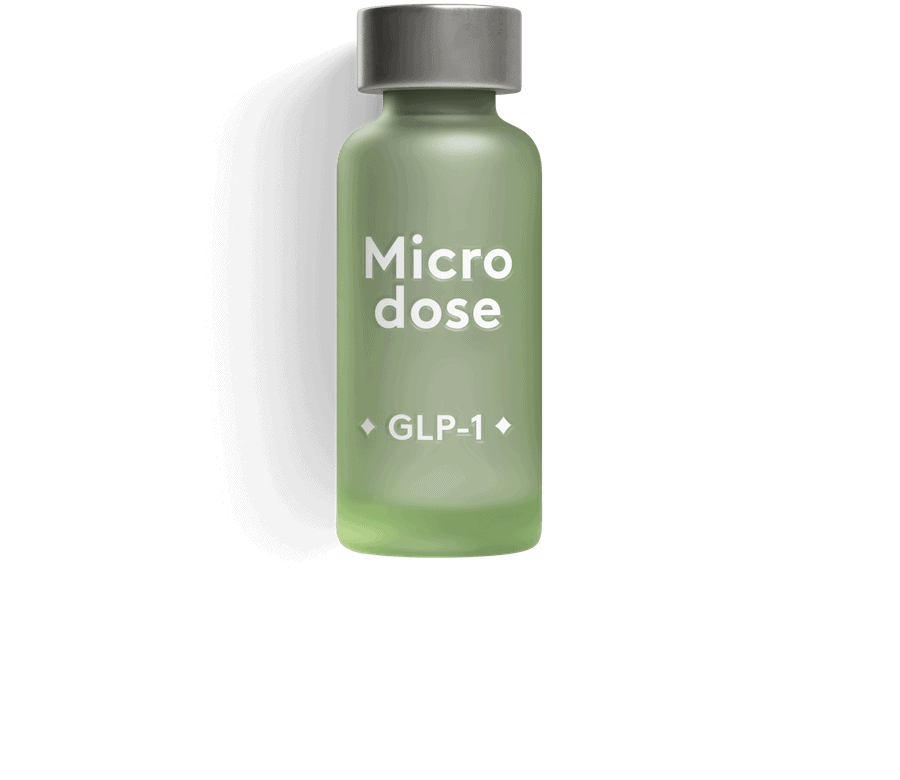
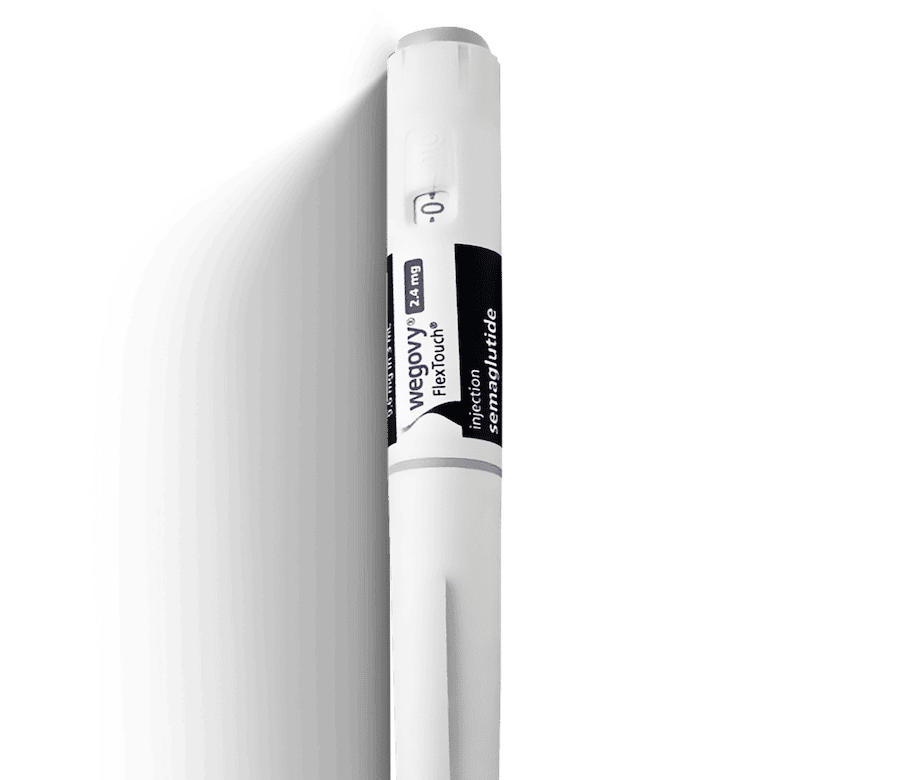
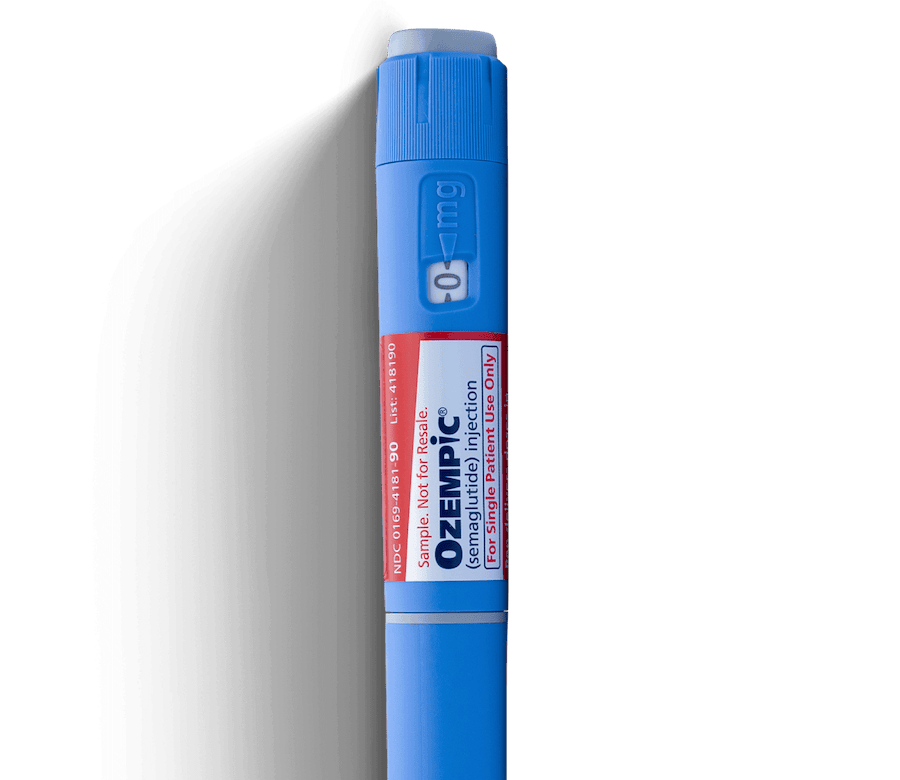
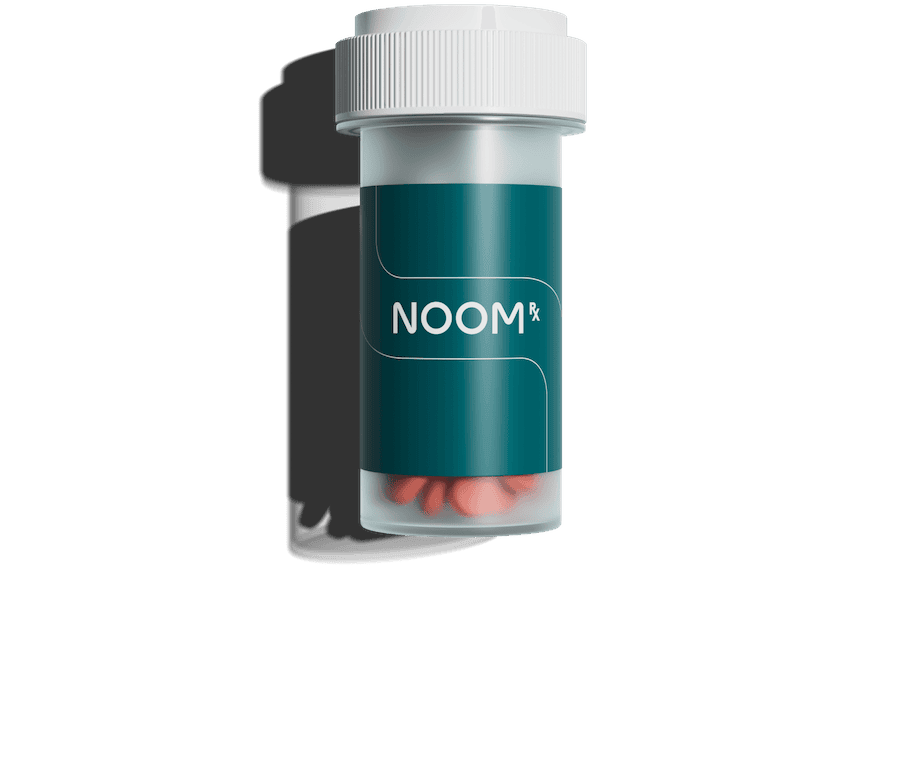

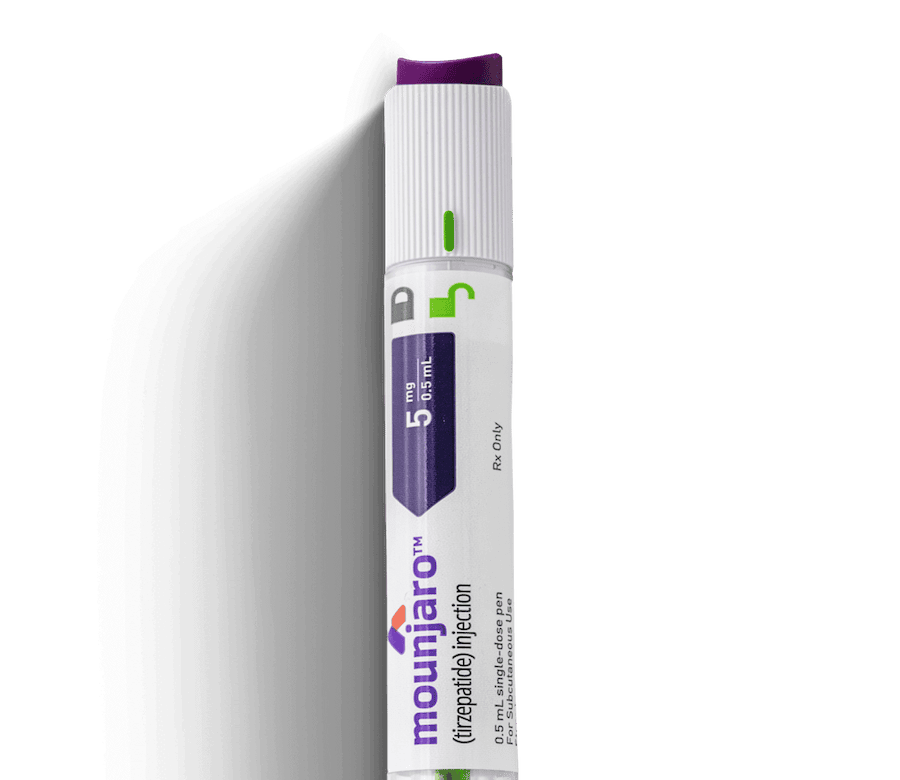
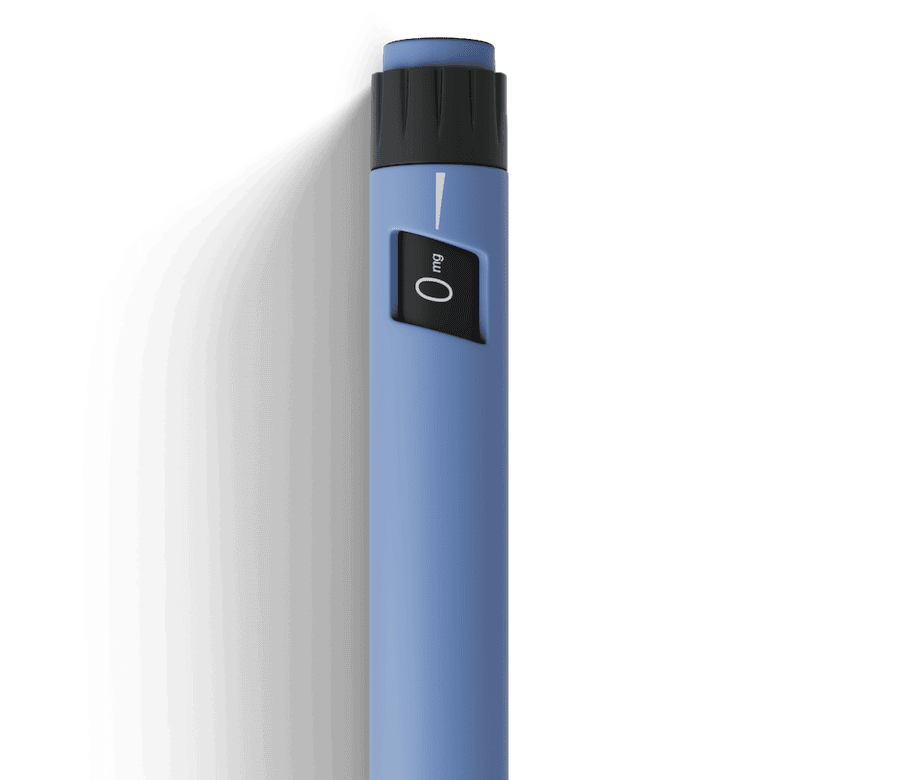



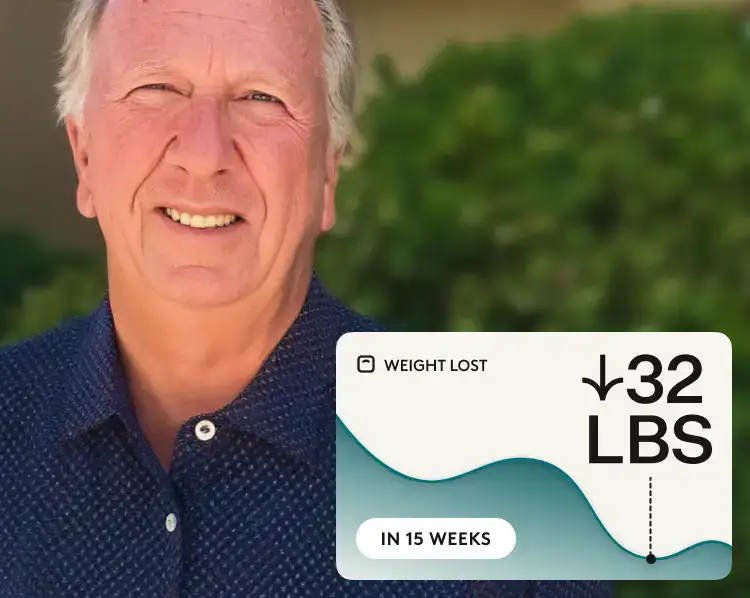



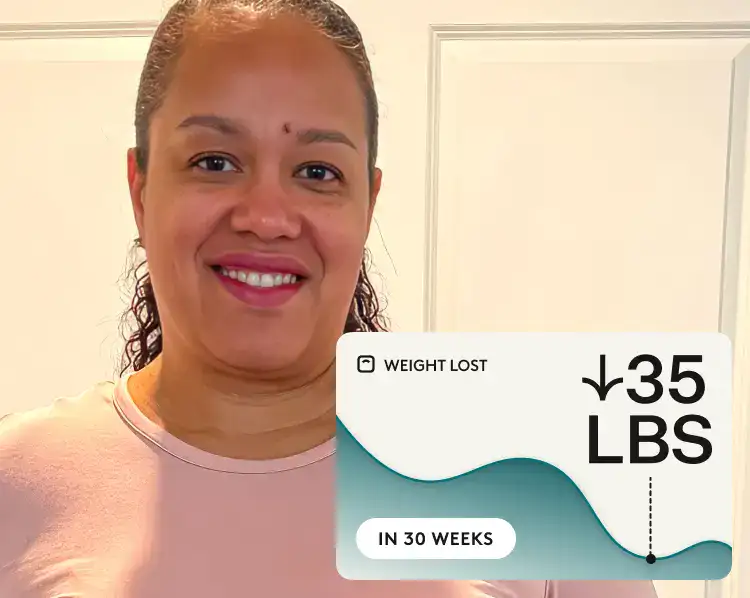
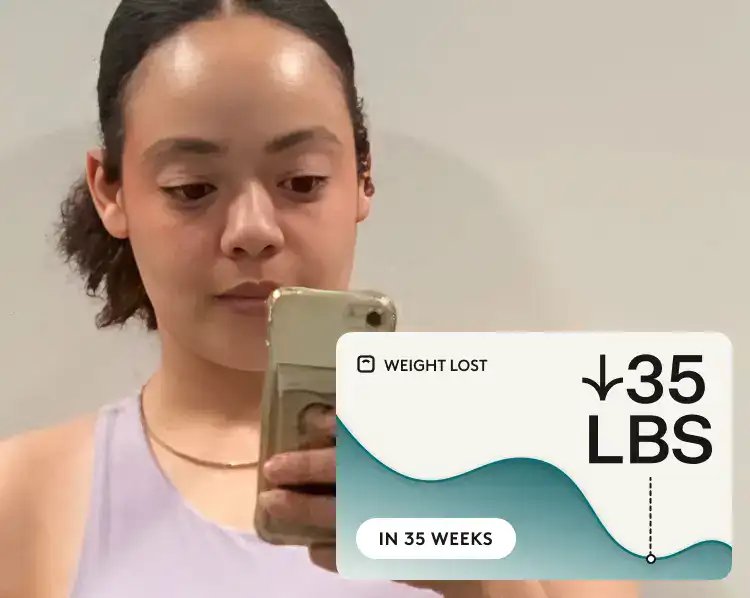



 Meaghan Cameron
Meaghan Cameron
 Noom Team
Noom Team
 Melissa Kay
Melissa Kay

